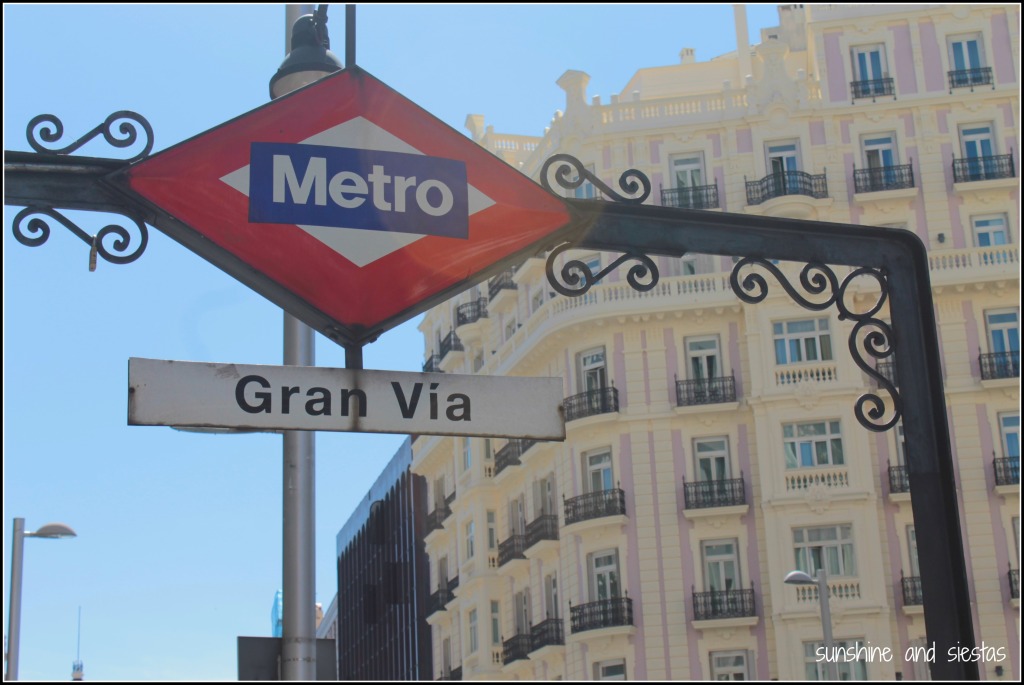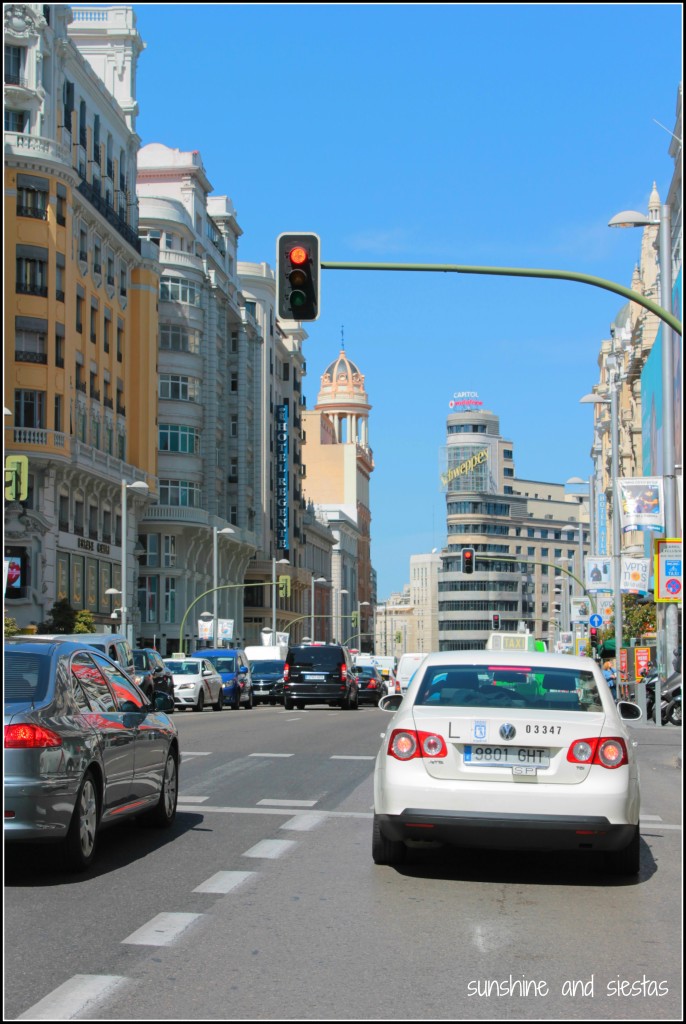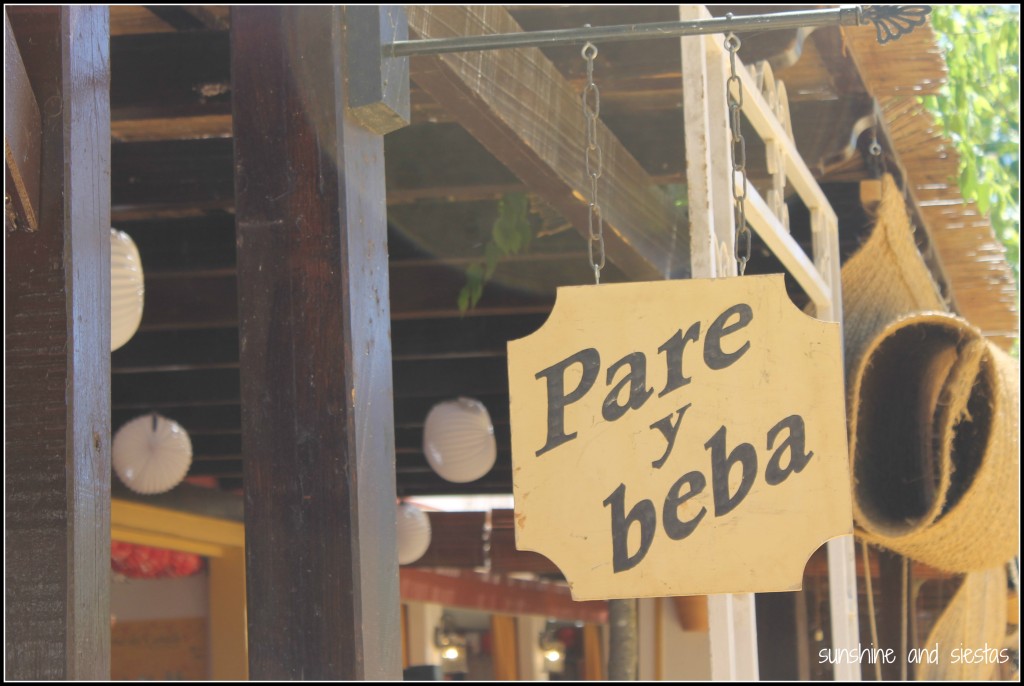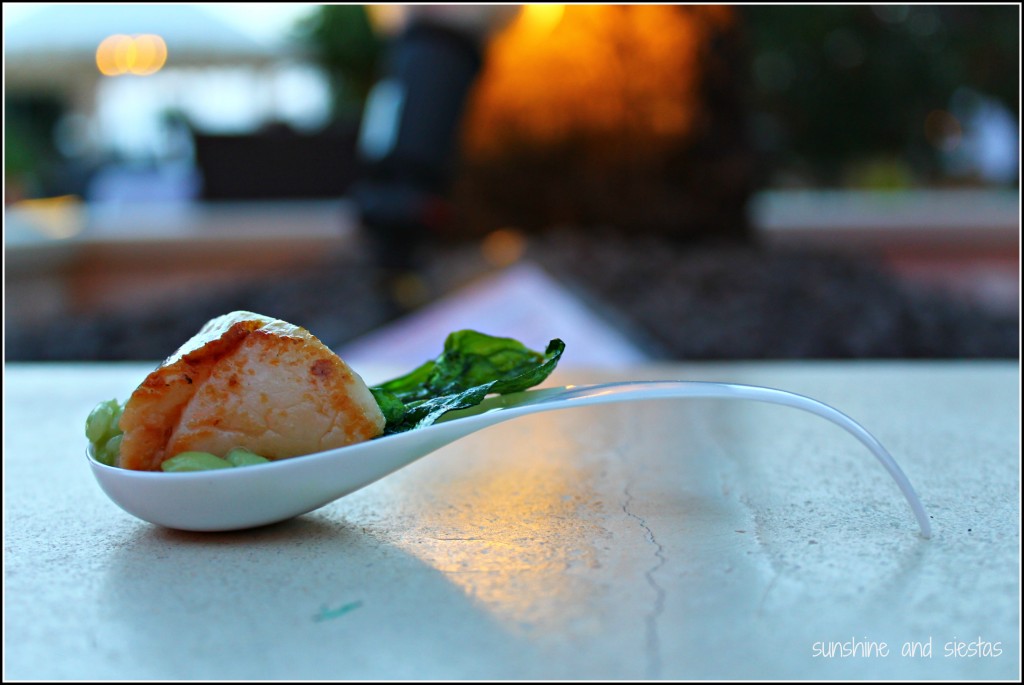As soon as I’d said the word, I clasped my hand over my mouth.
“Gracias.”
Not an aspirated graciaaaaaaahhhhh, the final syllable lingering like an afterthought. A full pronounced grah-cee-us. With an S at the end.
The man handed my to-go cup of coffee and wished me a nice day, and I walked away, wide-eyed and concerned about how quickly I’d dropped my andalú. What was next, calling people maja or – worse – asking for a caña?
It’s already been a month since my abrupt adiós to Sevilla and moved to Madrid. I dropped into life in La Capital like I’d walked its streets forever, like I knew where all of the old man bars were to be found, like I could close my eyes when stepping off the Metro and still make a transfer correctly.
Our aterrizaje in Madrid can only be described as a soft one, one in which there was just a quick bounce, and we had landed.
It had been so long since I’d left a place that I call home and jumped into the unknown – I’ve lived in Sevilla longer simultaneously than any other place (and I moved four times before age 12, so I’m used to being the new kid in class). But, Madrid wasn’t really the unknown. The Novio has tons of family in Madrid, and a week after we arrived, all 10 of the primos were crowded around a table, sharing a meal of pasta and endless embutidos. And I already knew the transportation system, had battled extranjería and didn’t trip over every other word in Spanish.
My biggest battles, so far, have been adjusting to some language differences (who calls a loaf of bread a pistola?! The madrileños do!) and training my body to get up early and work in the mornings. Between getting settled and starting a new job, I’ve become a creature of the barrio, barely leaving my little bubble in Chamberí.
Hogar Dulce Hogar: Looking for a flat in Madrid
Our first order of business was finding a place to live. Madrid, in case you didn’t know, is large. Like, huge. And every district has smaller pockets of neighborhood, or locals will refer to them as by their nearest metro line. “Qué tal en Metro Cuzco?” I don’t know, how is it?
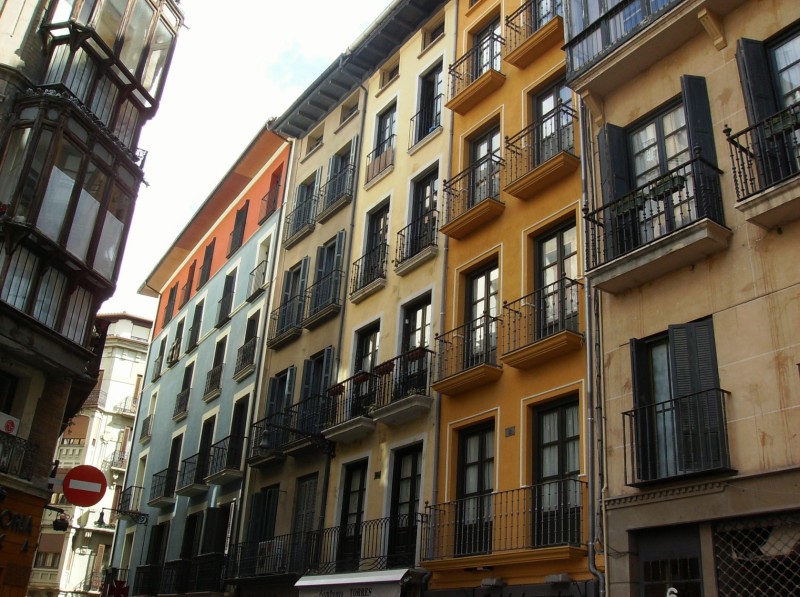
So, we began narrowing down the neighborhoods and set a firm price since we’ve decided to not rent our place in Seville just yet. Chamberí was the top pick for areas, and our budget would stretch just far enough for two bedrooms and around 50 square meter of living quarters. After living for six years in a house with the Novio, I was used to space and modern appliances. Plus, nearly every place we saw on Idealista was for students only (with mommy and daddy’s aval bancario) or meant going through an agency and paying extra fees and tax. But I was optimistic, even in the dead of summer.
I became an Idealista junkie, browsing on my phone every time I picked up free wi-fi or waited to cross the street at a stoplight. I called up agents and people offering up places meeting our criteria from 9am until well after siesta time, using the time between tours to take note of the nearest market or churrería.
Every hole-in-the-wall student apartment we saw had something off about it. Too small, too dark, wall-to-wall with Cuéntame-Cómo-Pasó kitchen tiles and heavy wooden furniture. It had been nine years since I’d looked for a place to live in Spain, and nothing seemed “just right.” And this, from someone who wrote an ebook about moving to Spain.
The fifth place we saw is owned by a man named Jesús, sevillano by birth but very much madrileño from many years in the capital city. The place didn’t tick off all of the boxes, but it would work nicely (and no Cuéntame-era tiles to scrub!), particularly for walking to work and saving more than 50€ in a monthly transportation pass.
The area of Chamberí we live in – Rios Rosas – is within 30 minutes walking of Tribunal, right up the street from Nuevos Ministerios and seven stops from Sol while being well-connected on three metro lines. Better yet? It’s quiet yet lively, and the proximity to Old Man Bars is killer.
The Novio has even toyed around the idea of writing a blog about the quality of the Old Man Bars around here.
Baby Steps and an Introduction to the Comunidad de Madrid’s Health System
Jesús handed us the keys and we killed a few cockroaches as we moved in. We settled in, walking around the neighborhood and stopping to eat our way through free munchies at all of the Old Man Bars we discovered. The Novio got us empadronados the following day, and then it was up to me to get us registered at our nearest ambulatorio.
I have seen the error of my ways, people: I can never, ever complain about the Sistema Andaluz de Salud. It was extremely easy to change my records from Andalucía to the Comunidad de Madrid and ask for a new health card, which arrived to my mailbox in three weeks. Everyone was pleasant and signed me up for a doctor and nurse they assured me were great resources for foreigners, and they weren’t wrong. Plus, you don’t have to go through your GP to get an appointment with specialists.
I left smugly, thinking that my move to Madrid would be even easier and called to make an appointment with the lady doctor.
“No, no le podemos atender en este centro.” I winced over the phone and asked why not. The woman on the other end curtly told me that they would call me whenever an appointment was available. I explained my situation and the urgency, but she wouldn’t budge. It seemed I was caught in some bureaucratic no-man’s-land, privy to a funcionario who may have been sensitive to my case, or maybe not.
When I did get an appointment, the doctor sent me for a routine blood test at a hospital near my new job. I agreed, thinking I could head in a little early so as not to miss my third day on the job. I waited for over TWO hours and, having not eaten, dug into my granola bar before even having the nurse applied pressure on the stab mark. The sugar put a spring in my step as I showed up for work an hour late, and I secretly missed all of the old ladies in my clinic back in Seville who would say, “Oh, I’m not sick, I’m just wasting time by waiting in line to see the doctor. Haven’t got anywhere to be.”
And when I asked my centro de salud for a follow-up for the results? I was told there are no specialists during the entire month of August, so I’ve been sent to the other side of the city three weeks later.
En fin, I’m learning as I go and being that person on Facebook groups.
A new job in a new sector
The biggest reason we moved to Madrid in the first place was for professional reasons. As much as I loved teaching English in Spain, I couldn’t see myself doing it forever because of the lack of mobility. I was director of studies, and I couldn’t aspire to much more.
As a child who ran before she walked, slowing down to a trot is never something I’ve been good at.
I’m nearly a month into a new position as an admissions counselor at an American university with a free-standing campus in Madrid. Myself a product of the system and an experienced teacher in Spain, I can easily point out the benefits of a liberal arts education, a student life office and a multicultural campus – just in my office, it’s normal to hear French and Arabic in addition to English and Spanish. And it’s making me nostalgic for my own co-ed years at the University of Iowa.
More than anything, I’m happy to feel the mental and pshyical exhaustion at the end of the day. The learning curve at my job has been the steepest, between acronyms and academic policies and learning the names of everyone on campus. But I’m feeling fulfilled and that the job is a great blend of skills for me – I’ve got one foot in the education field while the other in the PR and communications camp.
La Vida Madrileña
Pero cómo es que tienes planes? my cousin Irene asked when I turned down her invitation to go to the pool one afternoon when the A/C and reruns of Big Bang Theory were no longer appealing. Part of landing in Madrid was being able to reconnect with friends I haven’t seen in some time, have them show me their city instead of the other way around, and meet so many people who I’ve only ever been connected to through social media.
When I’m asked how Madrid is, I can only reply that, it’s muy bien with a raised eyebrow.
More than anything, it’s been the small adjustments. I was reminded by two neighbors that it’s a fineable offense to take out your garbage in the morning, and that the bins for plastic only come on Tuesday, Thursday and Saturday. That drinks and breakfast are more expensive, despite my salary staying the same as it was in Seville. That you can get coffee to go or head to the market at 8pm for groceries. I’ve eaten Belgian, Korean and killer Mexican food – and my excuse has always been that I don’t have an over.
I often feel like I’m in Chicago, just conducting my business in Spanish.
Madrid vs. Sevilla: the Ultimate Smackdown
Do I miss Seville? Te-la. Like, me duele en el alma. Walking over the Triana bridge to meet friends last weekend, the Novio and I took stock on the past month. Are we happy in Madrid? I’d say so. We’re together, like our neighborhood and are enjoying our jobs. Madrid has everything that Seville didn’t have for us.
But it’s not Seville, nor could it ever aspire to be Seville.
I have been wondering if people who live in Madrid could ever make as easy of a transition from the capital to Seville. It’s a city where you can’t sit down to most restaurants unless you’re in the hora franja, or 1-5 or 8-midnight. Where there’s only one pharmacy open on Sunday per neighborhood and not a single supermarket. It’s smaller, public transportation is almost mystifying and the whole pace of life is… different. And don’t expect free tapas with your caña.
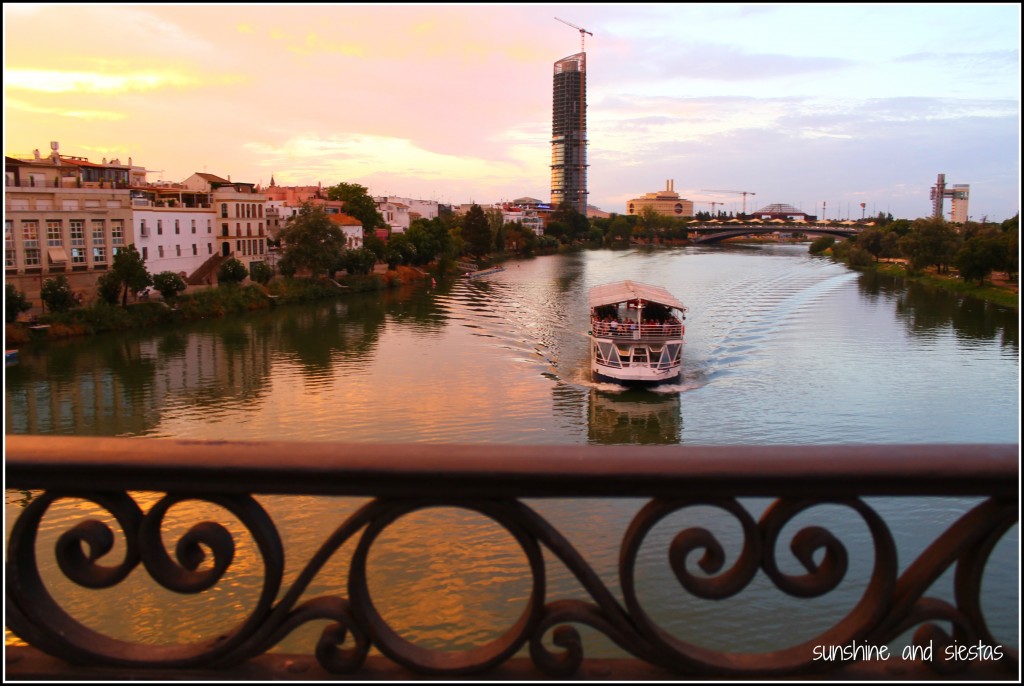
But Seville is easy to fall in love with on first glance and romantic in a way that the Metro de Madrid and the long avenues could never be. We’re not so stuck in our neighborhoods and often crisscross the city for tapas or concert venues. We stop for a beer with friends because time moves at a different speed, and that beer is far cheaper, anyway.
On my last trip, I was exhausted by the time my train rolled into Santa Justa just past 11pm. The contrast of sweltering air after two hours on a refrigerated train car was strangely welcoming, and I perked up as I told the taxi driver to take me to a bar where friends were waiting. Esto, sí. This is home to me.
Ana asked me how things were going, grazing my knee every chance she got, just in case I wasn’t really there. When I told her that things were flowing and jiving, she just replied, “Tía, you could make a home anywhere.” It’s the truth.
We don’t know how long we’ll be here, but three years is the minimum. We could stay a lot longer – or maybe try going abroad for a few years. Pase lo que pase, I wanted to live in a big city once in my life, and Madrid feels manageable and willing to let me get to know it.
And we’ll always have Sevilla, thankfully.
Have you ever moved to a new, bigger city? What were your steps to coping and coming out alive? I’d love to hear your take in the comments!
